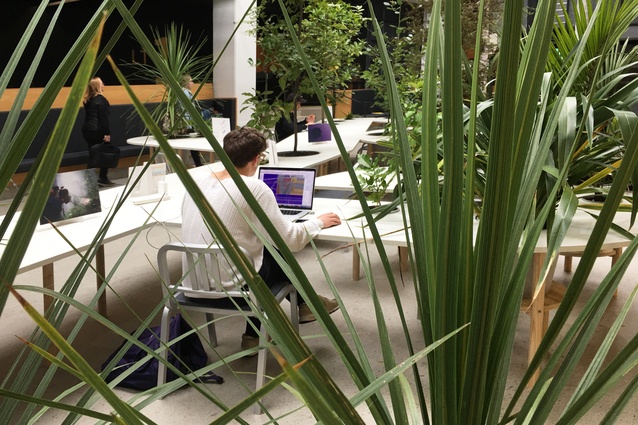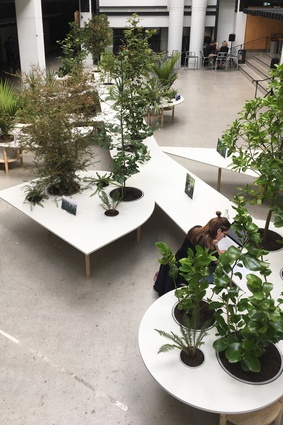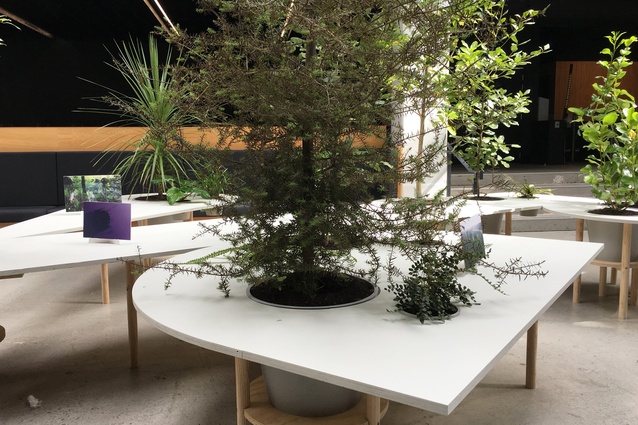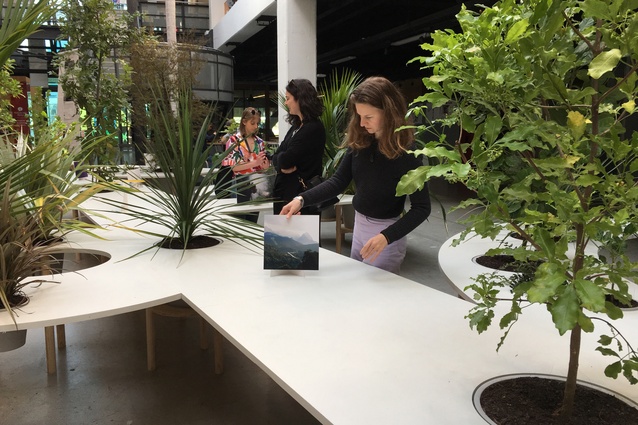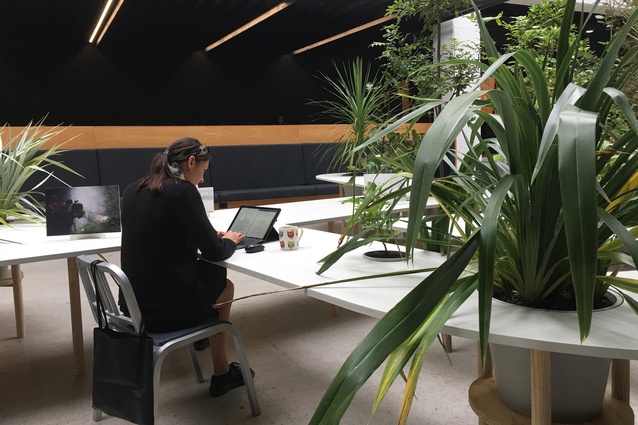The designers at the table: Palatable negotiation
Isthmus’ Brennan Baxley responds to a recent installation by Austrian eco-visionary designer Klaus Loenhart at Victoria University of Wellington, along with his lecture titled Imagine! The city as a living biome.
Functional and aesthetically enticing spatial design is a dish best served well seasoned, rich of programme and sugary to the taste. Although, if you sprinkle in bits of cooperative, professional and innovative discipline, then you’ve got a delectable cornucopia of solutions for inevitably big world problems.
With the optimistic undertone today, many design practices and eager academics endeavour to tackle impending issues facing our urban and landscape environments such as climate change or sustainability. With narrow focus and singular design undertakings, this can be pragmatically difficult to achieve. It thus remains a challenge, especially without the involvement of many integral components.
Austrian eco-visionary designer Klaus Loenhart primarily preaches this approach in his most recent ‘table’ installation and his research on strategies to building with/in/amongst/between environments. To achieve a balanced rewarding design, a designer should prepare their course with numerous disciplines, set to work with the existing resources and restored ecosystems. The most desirable integrated design is a table affair; best attended by a solid company of hungry spatial thinkers, ready to restore living systems, built forces and human agencies.
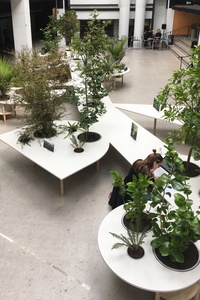
In September, Loenhart – founder of terrain.cloud and terrain: integral designs and Professor at the Institute for Architecture and Landscape at TU Graz – completed a three-week visiting practitioner programme at Victoria University of Wellington that culminated with a lecture and temporary installation for the Faculty of Architecture and Design. Speaking to all the design schools of landscape, architecture, building sciences and interiors, this intervention, Imagine! The city as a living Biome, constructed a seemingly simple message and unveiled a deep-rooted exposé on co-habitation and companionship.
Loenhart not only provided a much-needed seating arrangement for the high-ceilinged atrium, but also a far from off-the-cuff commentary on the way humans and nature may interact, at least while seated. The installation, built by student volunteers, fashioned a sinuously abstract serpentine motif, yet completely functional table that wraps and furls in the empty floor space. What makes this optimistically focused on the pure entanglement of human and nature dichotomies was that the table was unashamedly perforated by a variety of potted native plants.
These select species, whether soft and lush or sculptural and textured, were tactfully positioned in the middle, edge and around the table’s inevitable users: adding height, scale and depth to a previously sparse, tall space. It was not only about the size of the entire installation, but the smaller, more intimate scale of being seated at the table and how one might become a part of place. He described the personal exchange of sitting about this table as a negotiation: a dynamic and sensorial connection between what modern philosophy notes are mutually exclusive entities.
This ephemeral creation does not rely heavily upon the nuances of neo-sustainability, which crack down on the supply of resources and their management. Rather it edges on sending a message that, potentially, technology and simple integrations of typical living entities might be injected and perform as a system that has far reaching effects. Consider this a scaled, toned down design of Loenharts’ fully constructed performative “urban agglomeration”, found in his built projects for large city plans and ecologically orientated layers.
The negotiation is fundamentally about humans’ interest in relating with the environment, dissolving what would be a strong dichotomy of the urbane and the natural. Loenhart wishes to activate our bodily senses and integrate natural sciences to construct a space that would be a compromise to our control and the ecological pressures paramount in sustainable and environmentally sensitive systems.
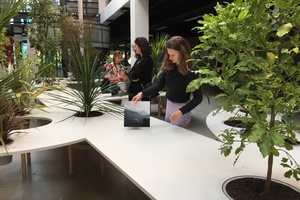
These constructs rationalise the need to integrate components of living systems and built forms. Sustainability and carbon neutralisation in the time of impending climate change has been served at the table – but let’s reason: do the entrees stop there?
According to Loenhart’s practice of multidisciplinarity – particularly in relation to the large global issues of today – he references a call to “climatecture”, or microclimates for macro-change. These hybrid, performative components of climate, landscape and architecture are means of collated components for designing. Dramatic, unwavering change instigates a socio-spatial attachment for our built and natural forms.
“Climate and climate change determine not only our living conditions, but also our political, social, and built reality,” Loenhart says.
His recent building for the Milan expo capitalises on breathing architecture with climatic purpose. In his Airship Breathe Pavilion, Loenhart massages microclimates and air purification inside a pavilion, set to titillate the senses and keep users cool.
Going further, Gruen Erde Breathing Headquarters’ interior spaces perform as a living system by perforating the mass of the building, which acts as a natural ventilation. This not only encourages proper flow and the reduction of energy waste, but also exemplifies the human relationship to the natural biome with some fresh air.
Holistically this hereditary philosophy is taken to another practical level where Loenhart rightly practices what he preaches. Just as his philosophy mixes integral human endeavours and ecological agencies, he has developed this through his own built designs, which integrate many related disciplines that do not stop at just architecture and landscape architecture.
He notes through his company agenda: “Architecture and landscape are inseparable! In this statement we are giving voice to what is apparently a self evident truth, since architecture and landscape are the material from which our environment is made.”
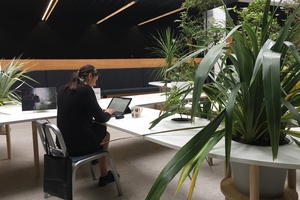
This brings us to our understanding that dialectical cultural constitutions are detrimental to integral complexities. Negotiated practice, especially between architecture, landscape, urban design, ecology and engineering, to name a few, need poetic harmony to achieve regeneration by which this constructed space ameliorates the places we ‘live’ in.
Innovative practice in New Zealand can fall easily into a variety of co-creative avenues, blurring the pan-disciplinary approaches to design. Quite joyfully, this comes to how each firm expects to contribute to the projective design problem at hand. For example: A trans-disciplinary practice generally designs across conventions together to achieve the project scope. Inter-disciplinary practice opens up the core of each discipline between similar design achievements, working within and about conventions.
More commonly, multi-disciplinary practice involves many people, fields and components that provide a multitude of services and thorough design perspectives. New Zealand firms such as Isthmus Group, Boffa Miskell and Studio Pacific Architecture have been performing with these guises for some years, tackling larger and more relevant complex projects. Isthmus Group’s CEO Ralph Johns and Founder David Irwin progressively orientated the practice as a “no boundaries” approach with a fundamental opportunity in design breadth.
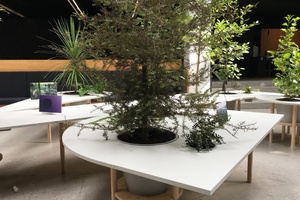
Several firms in North America and Europe, such as Michel Desvigne Paysagiste, West8, Scape, Balmori Associates and Weiss & Manfredi also frame and shape the urban and natural entities by collaboratively checking boxes and encouraging rewarding environmental paradigms. A good portion of these services relies on scopes that address resilience and sustainability in built forms, planning, environmental resources, and ecology.
In a more sombre July, institutions and architects from the UK, North America, Australia and New Zealand declared a state of crisis with carbonisation and climate change. Further to that signal, and in line with the Paris Agreement, New Zealand passed the Zero Carbon Amendment Bill and many design disciplines responded with interest and support: a proclamation that projects us further into necessary solution finding and cross disciplinary conviviality.
By many means, our environment, built space and our method to how we construct these, should aim to work cross-disciplinarily and involve integral components. Compromise is key; innovation is expected. Now bring your seat to the table and sit up straight.

